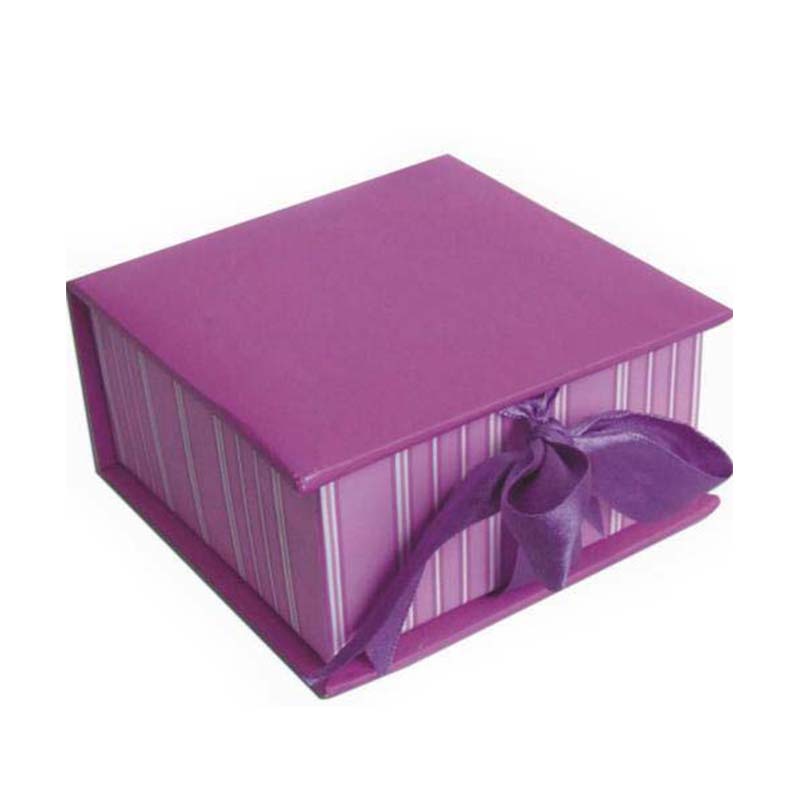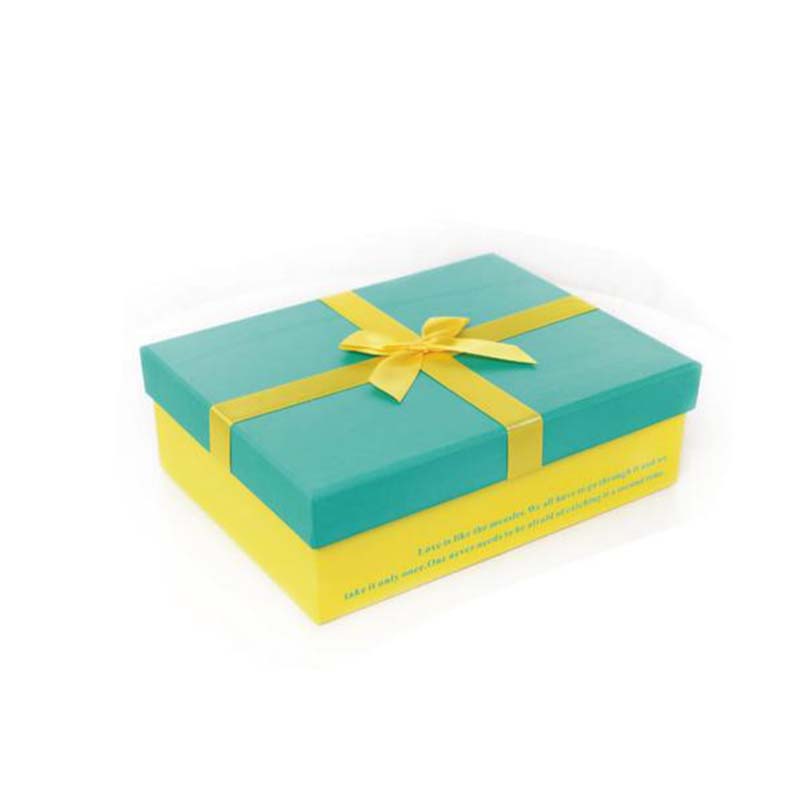Causes and Countermeasures of Anion Impurities in Wet-end of Paper Machine
The experience of Carton packaging design: The creative production of product packaging is not a matter oftechnology but of marketing. As for the printing and production processes, it is only the bottom equipment and technology system that the industry and the company must possess for the packaging manufacturers. This is only the process of production and production. After the box is produced, it is actually a product. All the information conveyed by the box is actually the information of the goods and is also an interpretation of the goods themselves.
The Gift Box is a practical gift package with the main purpose of presenting gifts for relatives and friends, and is an extension of the social needs of a functional package. The gift box is a manifestation of the heart. Our love gift or the love merchandise purchased by us is a package that can reflect the effect. It is either romantic, or mysterious, or a surprise, or a shock when you are slow. Slowly opening it is like opening the secret forest in your heart and showing him the different intentions you are expressing. This is the meaning of the gift box.
In the graphic design, hot stamping, UV, and convex (concave) can play the role of finishing touch and highlight the design theme, and is particularly suitable for the decoration of trademarks and registered names.
The source of anion impurities and its hazards
1.1 Sources of Anionic Impurities
Anionic impurities are the generic term for all dissolved anionic oligomers or polymers and nonionic hydrocolloids present in the wet end of the paper machine. These anionic impurities have different properties and sources:
(1) From pulp, such as lignin derivatives, hemicellulose, fatty acids, and the like.
(2) From anionic builders such as starch, CMC, organic acids, dyes, bactericides, etc.
(3) From filler dispersants such as polyphosphates, polyacrylates, and the like.
(4) from clear water, such as humic acid, fungicides and so on.
Most of the harmful anionic impurities come from the pulp, so only the accumulation of anionic impurities from the pulp is described here. Every link from stock preparation to papermaking involves the accumulation of anionic impurities. In the preparation of materials, experience has shown that long-term storage of wood has an adverse effect on fiber strength and bleaching process, but the shortened storage time leads to the non-isolation of volatile compounds such as terpenes; the use of viscous substances such as esterified fatty acids. It cannot be oxidized and saturated. As a result, shortening the storage time increases the content of anionic impurities in the pulp.
If grass pulping is used due to shortage of raw materials, the use of new grass pulping will also increase the content of anionic impurities in grass pulp due to the fact that pectin, starch, etc. in the forage are not removed by natural fermentation. In the pulping process, the pulping of wood and grass materials largely depends on the dissolution of lignin, hemicellulose, extracts, etc. in the raw materials. These dissolved substances constitute the most important organic anion in the papermaking system. Impurities. The amount of these organic anion impurities has a close relationship with the pulping and bleaching process conditions, process control, and the degree of bleached pulp washing. In general, mills using high yield pulp and waste pulp contain the largest amount of anionic impurities, and anionic impurities from various mechanical and semi-chemical pulps are mainly in the form of lignosulfonates, humic acids, and anionic gums. The presence of soluble substances.
The anion impurities from the waste pulp are mainly a large number of lignin derivatives and other anionic impurities associated with waste paper grades. Paper mills that use broke or waste paper have the highest and most complex anionic impurities. Coated broke or waste paper, especially coated broke or waste paper using calcium carbonate and titanium dioxide. The coating contains a large amount of anionic dispersant (use of starch as binder is more important than using protein as binder. More dispersants increase the concentration of anionic impurities rapidly.
For the general chemical bleaching pulp, the straw contains more anionic impurities than the wood pulp. Regardless of the kind of pulp, the low degree of pulp washing is the most direct cause of the anion impurity concentration in the pulp. In the manufacture of paper sheets, when calcium carbonate is used as a filler and a pigment is coated, that is, in the case of papermaking under neutral or alkaline conditions, since the aluminum sulfate cannot be used as a fixing agent, the anion impurities cannot be neutralized; At an alkaline pH, anionic impurities ionize more anionic groups; under alkaline conditions, low-molecular-weight hemicellulose may also dissolve out of the cell wall (such substances include xylose and arabinose-based glycans. Some of the colloidal materials enclosed in the fibrocytes under acidic conditions may also be released due to the swelling of the cell wall under alkaline conditions. Therefore, papermaking under alkaline conditions will result in a higher concentration of soluble anionic impurities.
In recent years, due to the increasing degree of closure of white water systems in paper machines, anion impurities are not adsorbed on pulp. Therefore, these anionic impurities accumulate more and more with white water, and the anion impurities caused by closed-cycle white water are far more Pulp itself is serious.
1.2 Effect of Anion Impurities on Papermaking
Anionic impurities can affect papermaking in many ways, such as:
(1) Impact on paper machine operation: The formed agglomerates (resin, white resin, adherents) reduce the running performance of the paper machine and increase the number of breaks.
(2) Affecting the efficiency of additives: It has adverse effects on the effects of sizing agents, dry strength agents, wet strength agents, retention aids, and dyes.
(3) Affect the quality of the paper sheet: reduce the paper sheet formation, reduce the opacity and brightness of the paper sheet, cause small holes and dark spots, and reduce the strength of the paper sheet.
In short, anionic impurities affect papermaking by two mechanisms. First, the high negative electrode properties make the positive charge requirements of the pulp very high. Add cationic additives, such as retention aids, reinforcing agents, etc., and anion impurities first. Neutralization occurs with these polymers and consumes a large amount of cationic additives (generally cationic additives are not effective charge neutralizers), which may cause cation application technology, production process aids to completely fail, and their high negative electrode properties also affect the pulp. The flocculation of medium and small fibers affects pulp retention and drainage. Therefore, the content of anionic impurities is commonly expressed as the cationic charge requirement of the slurry filtrate. Then the anion impurities accumulate with other substances or combine with themselves to form agglomerates or complexes that are deposited from the aqueous solution. If they deposit on fillers, fine fibers and fibers, they reduce the hydrogen bonding between the fibers. Reduces the bond strength between fibers and the brightness of the paper sheet; if left in the net, pipes and blankets during the paper copying, it will block the papermaking net, blankets, cause sticky rollers in the press section, and increase paper breakage The number of times and a dark spot appear on the paper sheet also interferes with the sizing and dyeing of the paper sheet.


Gift Box,Jewelry Gift Boxes,Magnetic Gift Box,Gift Tin Box
Shenzhen Yanhua Packing Products Co., Ltd. , https://www.yhpackagingbox.com